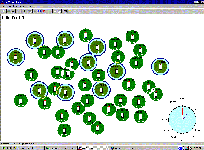
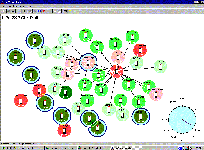
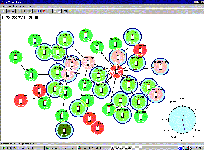
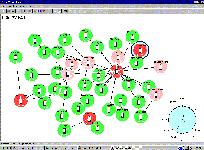
This would cause all these other mTs to find another appropriate mT-server.
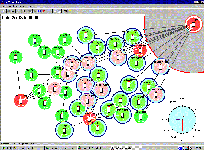
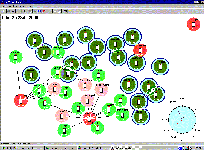
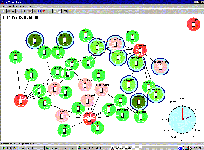
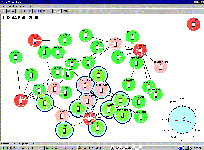
This is a sequence of snap-shots from an example operation of SONIC self-organizing protocol, with a set of 41 mTs that are initialized at the same time. Each of the mTs are capable of satellite communication, and the goal is organize them into a small number of networks.
Each mT has a its own communication range. The mT can only communicate with other mTs within this range. Unidirectional communication links results in some cases when the communication ranges of two mTs are different. The protocol handles these situations.
Each network has:
Time is shown in Hours.Minutes. This example models a very low speed environment having low data rates. The time delays in network adaptation is completely parameterized by the duty cycle periods that are used.
| Last updated on Jan 2000 | -- Suman |